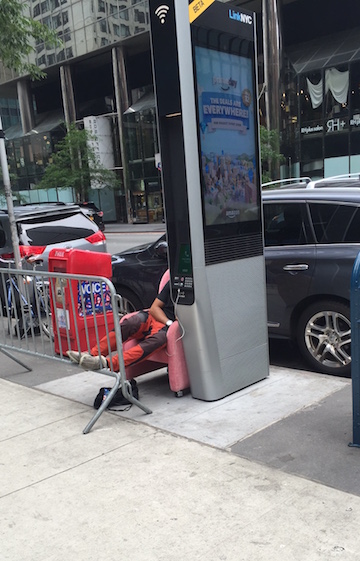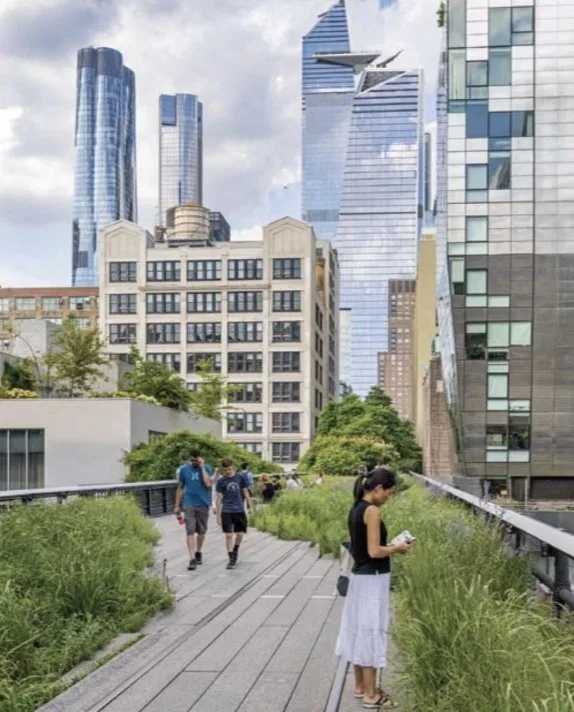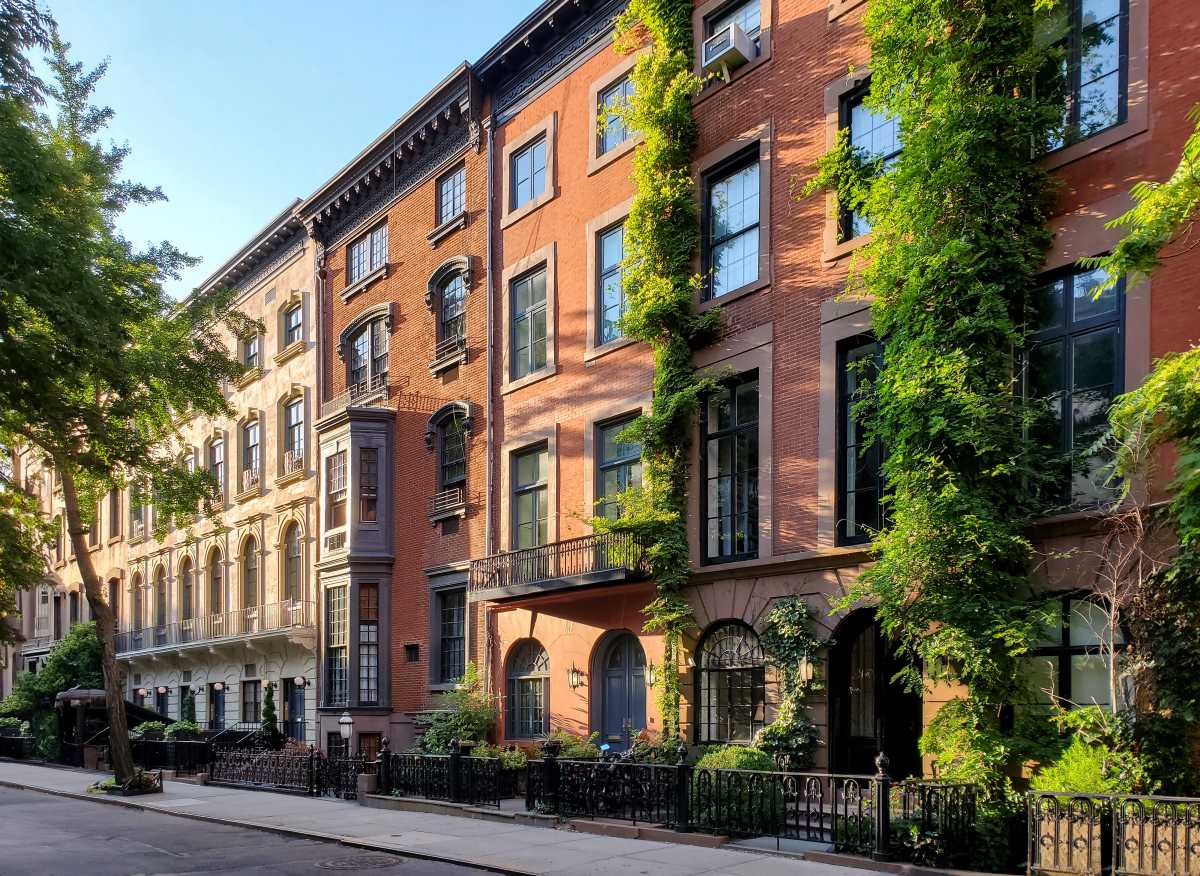
BY JACKSON CHEN | Only a few months after going live, the LinkNYC free Wi-Fi kiosks have been attracting complaints from communities in Manhattan — due, in part, to prolonged camp-outs by people overusing the free amenities offered.
LinkNYC, operated by CityBridge, has been activating kiosk towers that measure more than nine feet in height since the early spring, and they’ve now spread up Third Avenue on the East Side and Broadway on the West Side. The links, built to replace an outdated phone booth network, provide free Wi-Fi, two USB charging ports, and a built-in table that offers web surfing and free calls.
With something free being offered in New York City, it probably was just a matter of time, but some residents are now reporting instances of users camping out at kiosks and staying for hours. According to some complaints, people have hogged the links by setting up chairs to watch movies, creating slowly growing outposts, and even, by one account, dealing drugs.
During a trip downtown, Valerie Mason, the president of the East 72nd Street Neighborhood Association, found a man who was asleep but had his phone plugged into one of the links near the corner of East 49th Street and Third Avenue.
Upper East Sider Kathy Wouk recalled two incidents in her neighborhood — on Third Avenue, at East 82nd Street and at East 87th Street — where people had set up chairs and overstayed their welcome by treating the link as more of a personal computer.
“I was visually shocked in both instances,” Wouk said. “I’m so shocked people pull up chairs to these things.”
According to Ruth Fasoldt, LinkNYC’s community affairs manager, the company is still learning how New Yorkers and others are using their services in the beta phase of their 12-year rollout program.
“We are in conversations with the city about how to ensure that Links remain open and accessible for all and are not monopolized by any individual user,” Fasoldt said in a written statement.
To LinkNYC critics, the camp-outs are symptomatic of a bigger problem — the lack of any upfront consultation with neighborhoods that may have no interest in the free services being offered or the monolithic towers that deliver them.
Wouk’s husband, Jordan, a member of Community Board 8, characterized the links as a “tremendous assault on the viewscape.” At a recent CB8 Transportation Committee meeting, he said that the Wi-Fi kiosks are much taller and brighter than anything else on the city’s sidewalks, like bus shelters or phone booths. The revenue generated by the dual-sided advertising — which allows the services to be offered free of charge and returns money to the city — was an incentive, he said, for the kiosks’ enormous height that impairs pedestrians’ view while limiting sidewalk space.
Mason argued that the Upper East Side has no need for the services LinkNYC delivers, especially at the price of advertising on street corners.
“I just don’t think there should be advertisements everywhere you look,” Mason said. “They’re unsightly and they obstruct your view.”
The neighborhood association president is hoping that LinkNYC considers reducing the height of its kiosks. In terms of addressing the camp-outs, Mason proposed imposing explicit time limits on usage and even posting cameras to guard against abuses.
Overall, she’d like to see more community representation when it comes to the installation of the links in the area.
“I thought these were being tested to see if people wanted them, but I was surprised that a 12-year contract was signed for them,” Mason said of the rollout. “Nobody asked us where we wanted these and what was going on.”





























